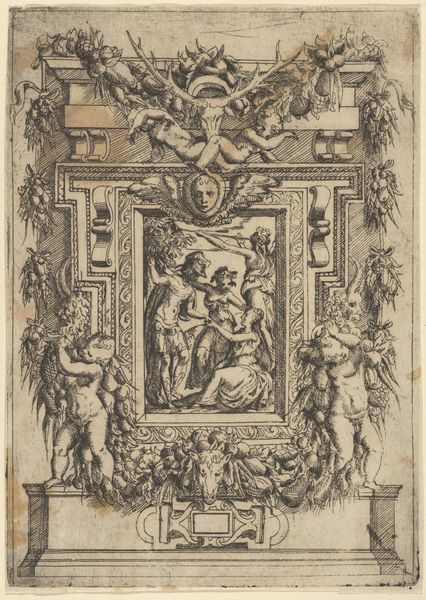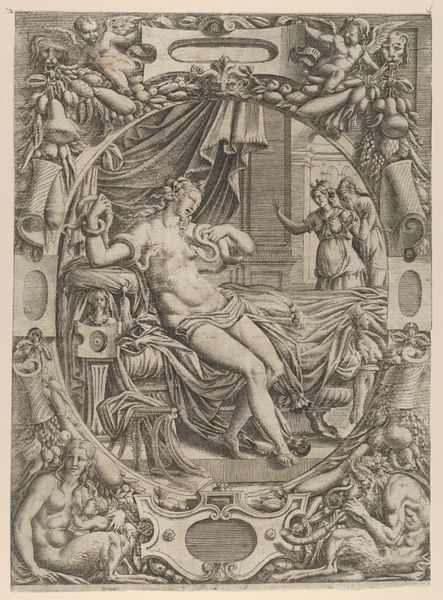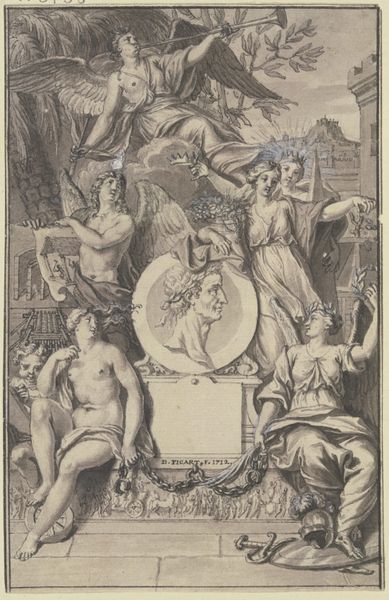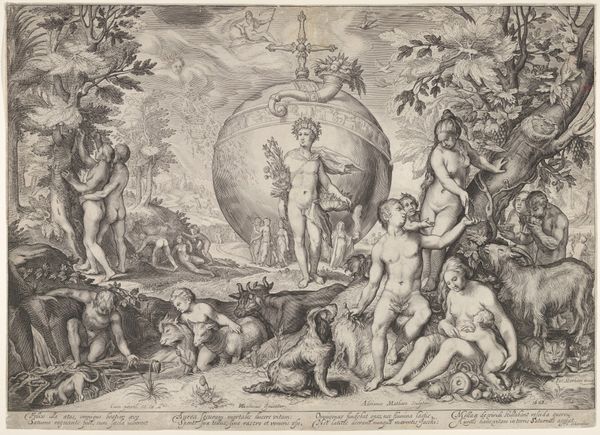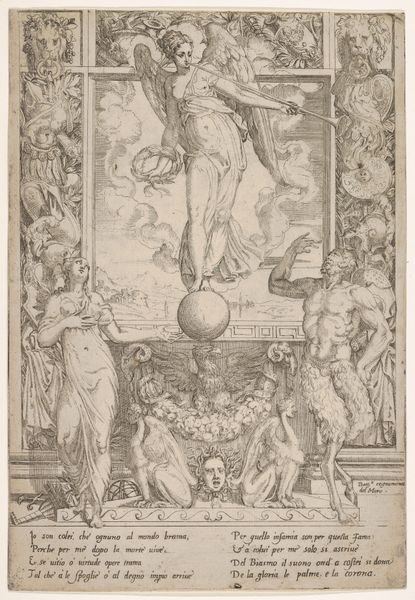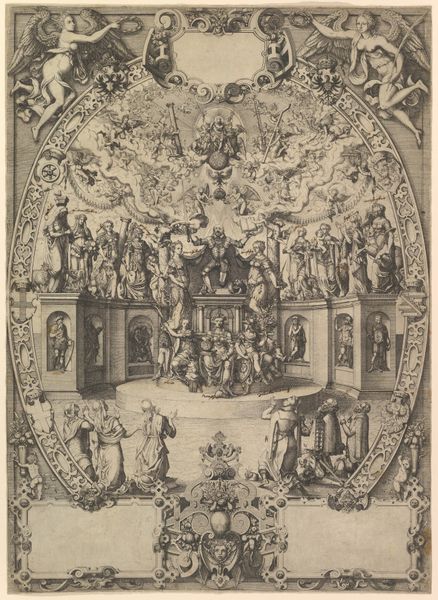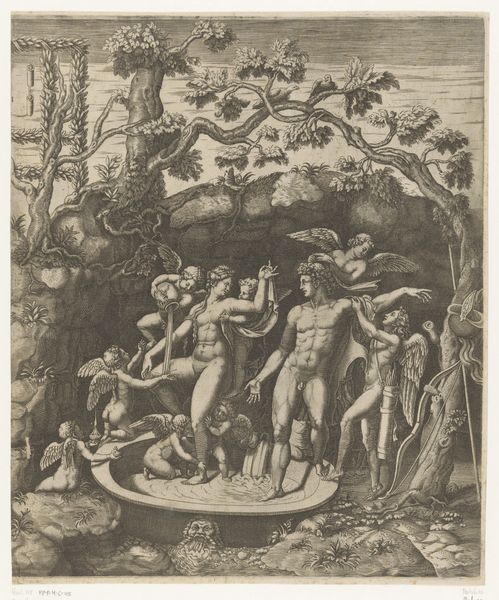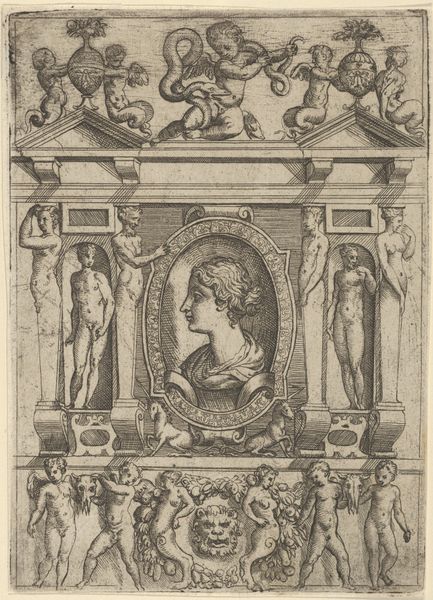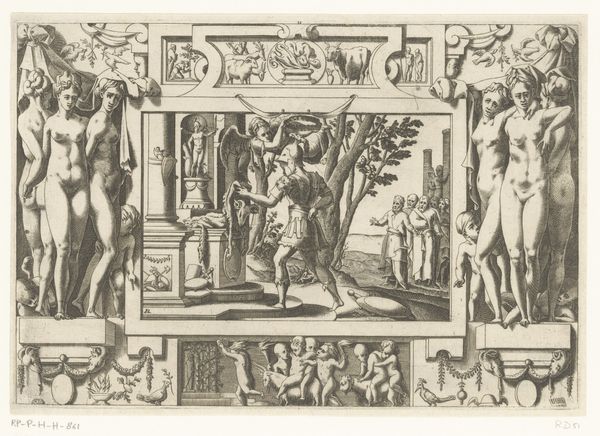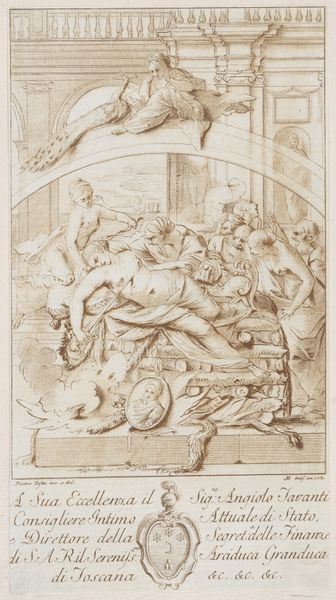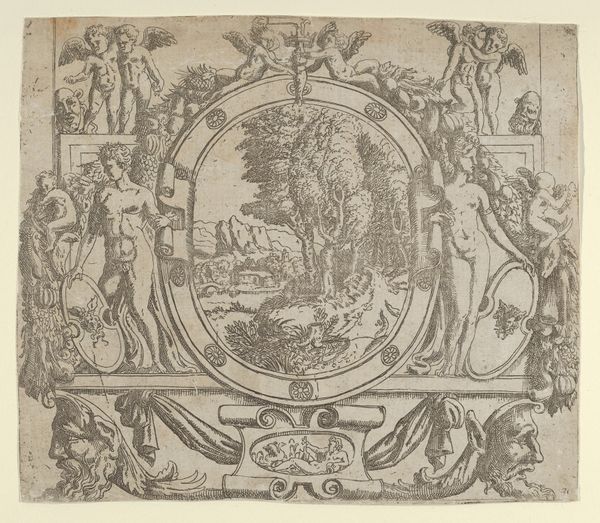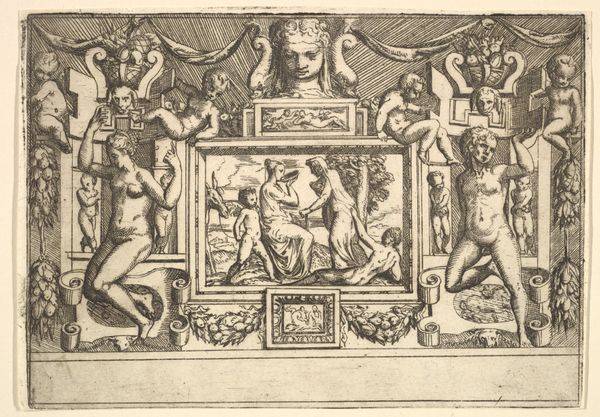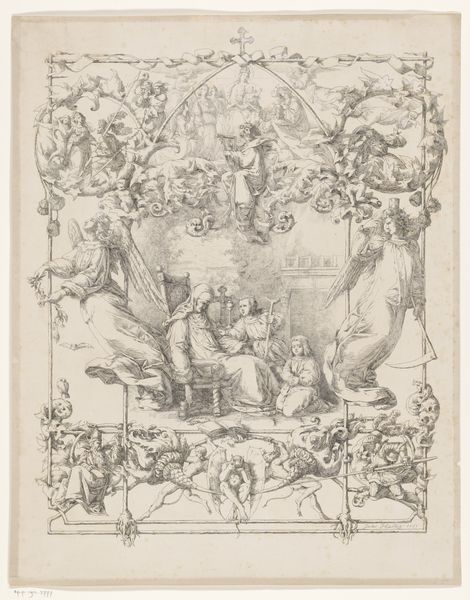
The Judgment of Paris; man seated at left reaches out to a woman who is flanked by two others, set within an elaborate frame 1535 - 1580
0:00
0:00
drawing, print, intaglio, engraving
#
drawing
#
pen drawing
# print
#
intaglio
#
mannerism
#
female-nude
#
engraving
#
male-nude
Dimensions: Sheet: 7 1/16 × 5 in. (18 × 12.7 cm)
Copyright: Public Domain
Curator: This engraving from around 1535 to 1580, created by Battista Angolo del Moro, depicts "The Judgment of Paris" within an elaborate frame. The print showcases an idyllic scene but I wonder, what's your immediate reaction? Editor: A whirlwind of textures! My eye struggles to settle; the composition teems with swirling lines and dense cross-hatching, offset by all those highly polished, idealized nudes, rendering an odd tension on the picture plane. Curator: It is busy, isn't it? Prints like these were often circulated among artists. Imagine workshops across Europe studying del Moro's interpretation, which reflects the Mannerist fascination with complex poses and mythological themes. "The Judgment of Paris", of course, retells the story of Paris choosing Aphrodite as the most beautiful goddess, sparking events that led to the Trojan War. Editor: The scene itself—the central oval—reads quite clearly despite the density of the overall composition. Paris’ pose, reclined and contemplative, focuses all attention toward the goddesses, especially Aphrodite at the very center. The framing elements are all hypertrophied muscles and decorative motifs – drawing our gaze to and from that primary mythological drama at the very center. Curator: And we can't ignore that the choice Paris makes carries considerable consequences. Looking closer, consider the patron, the political implications—the themes of beauty, judgment, and their potential impact on societal structures, so favored within Renaissance courtly circles. Editor: Do you think there is any visual cue pointing toward those looming calamities? Because I see mainly a carefully balanced arrangement. Observe the rhythmic placement of figures, for example. How each of the sculptural elements placed around that oval echo, but also elaborate on, the figures shown at the center. Curator: That's the beauty of engravings like this, isn't it? It speaks to so many levels simultaneously: aesthetic and symbolic. I’m still wondering about the absence of obvious visual signs of pending disaster. Editor: Maybe it’s in the polished surfaces and obsessive patterning: a sort of blindness to consequence and an almost desperate insistence on outward perfection. Curator: Well put! It certainly adds a new layer to how one can see this scene. I see something new every time I examine it.
Comments
No comments
Be the first to comment and join the conversation on the ultimate creative platform.
